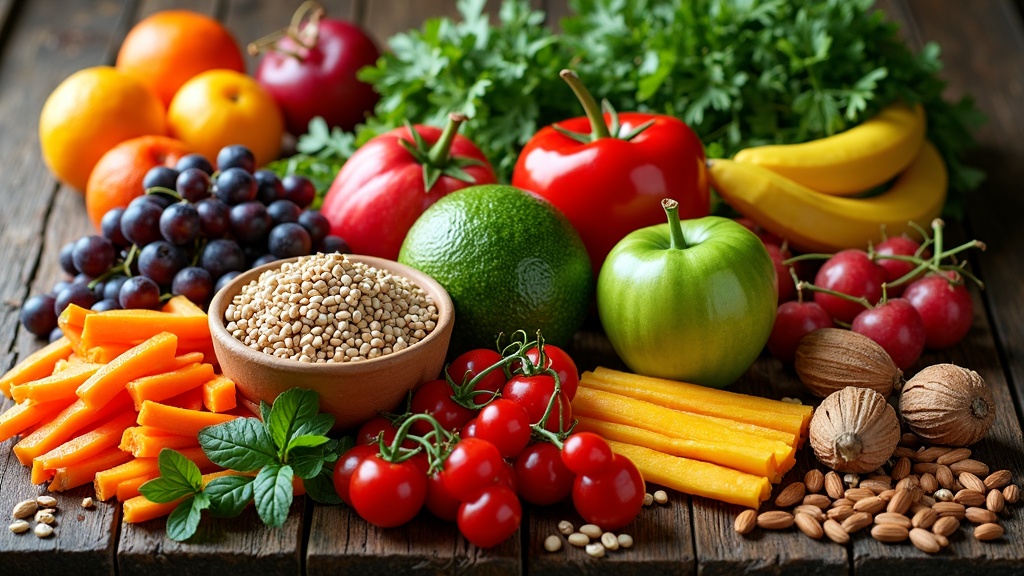Raw food diets have jumped in popularity among people looking for a fresh approach to health and nutrition. Eating raw isn’t just about endless salads and carrot sticks. It’s a way of focusing on whole, unprocessed foods to help your body benefit from natural flavors and nutrients. Trying raw food for the first time may feel confusing, but a thoughtful introduction makes the whole experience more approachable and enjoyable. I’m excited to walk you through what raw food is, why it’s caught so much attention, and how to get started, even as a total beginner.

What Is a Raw Food Diet?
At its core, a raw food diet is focused on eating mostly or entirely uncooked and unprocessed foods. The idea is simple: when food remains uncooked (usually meaning it hasn’t been heated above 118°F / 48°C), it keeps more nutrients and natural enzymes, which some believe help with digestion and overall health.
Raw food diets often feature fruits, vegetables, nuts, seeds, and sprouted grains. There are different versions of this lifestyle. Some folks get into it 100%, while others enjoy partially raw meals as a way to boost their intake of fresh foods.
Getting started with raw eating doesn’t mean clearing every cooked dish from your table right away. Many people begin by adding a few raw meals or snacks each week, getting comfortable, and then working up to their personal ideal mix.
Why Try Raw Food? Potential Benefits at a Glance
For me, the biggest reasons to try raw foods have always come down to taste, energy, and simplicity. Here’s why so many people are giving this way of eating a shot:
- More natural nutrients: Raw foods often hold onto vitamins and minerals that sometimes break down during cooking. For example, vitamin C and certain B vitamins are sensitive to heat.
- Digestive support: Natural enzymes found in uncooked fruits and veggies might make foods easier for your body to process.
- Fresh flavors and colors: Raw meals celebrate the original taste of each ingredient. This isn’t just nutritious, it’s really satisfying.
- Often fewer processed foods: Focusing on raw foods can help naturally lower how much processed, sugary, or fried food sneaks into your daily routine.
- Light and energizing meals: Many people report feeling less sluggish and more energized when eating mostly or fully raw—probably because of the combo of hydration and fiber from plants.
Of course, everyone’s body is different. Some people thrive fully raw, while others do best with a balanced mix. It’s all about listening to your body and adjusting as you go.
Common Foods on a Raw Diet
If you picture a plate overflowing with fresh produce, you’re on the right track. Here are examples of staple foods you’ll find in nearly every raw kitchen:
- Fresh fruits: Berries, apples, bananas, oranges, mangoes, pineapples—you name it. Most fruit is naturally ready to eat raw.
- Raw vegetables: Think leafy greens, cucumbers, bell peppers, carrots, broccoli, and more. Some veggies, like zucchini or cauliflower, work great spiralized or riced.
- Nuts and seeds: Almonds, walnuts, cashews, sunflower seeds, chia, and flax are easy plant proteins. Choose raw, unsalted versions.
- Sprouted grains and legumes: Sprouting turns grains and beans like lentils or buckwheat into fresh, crunchy toppings or salad bases. Just soak and sprout them at home.
- Coldpressed oils: Extra virgin olive oil, coconut oil, and hemp oil are popular choices for dressings and finishing dishes.
- Fermented foods: Raw sauerkraut, kimchi, and kombucha bring a gutfriendly probiotic boost.
Some extras, like raw cacao, coconut, and superfoods such as spirulina or goji berries, add flavor and nutrition tweaks for those who like to get creative.
How to Start Your Raw Food Adventure
Jumping right into eating raw can feel a bit intimidating, but starting small and planning ahead really smooths the transition. Here’s how I recommend easing in:
- Stock up on fresh produce: Hit your favorite grocery store, farmers market, or even consider joining a produce delivery service. Start with fruits and veggies you already enjoy.
- Add one raw meal a day: Try breakfast smoothies, big salads, or simple fruit bowls for your first raw meals. This helps your body and taste buds adjust gradually.
- Experiment with new recipes: There’s way more than salads. Think zucchini noodles, raw taco wraps, cucumber sushi, chocolate nut bars, and homemade energy balls. Trying new things makes the switch more fun.
- Prep and plan ahead: Keeping your kitchen stocked and prepping snacks ahead of time helps avoid cravings or resorting to old habits when time is tight.
- Stay hydrated and listen to your body: Raw foods are often high in water and fiber. Be sure to drink enough water and notice how you feel after meals.
Raw Food Kitchen Basics for Beginners
Getting started doesn’t mean overhauling your whole kitchen, but a few tools can make raw meal prep a lot quicker and easier. Here are the basics I found super useful when I began:
- Quality blender: Great for smoothies, soups, and raw dressings. Even a midrange blender can do the trick.
- Food processor: Chops, blends, and purees. This is helpful for making raw desserts, dips, and spreads.
- Spiralizer or julienne peeler: Turns veggies like zucchini or carrots into raw “pasta.”
- Dehydrator (optional): Makes it possible to whip up raw crackers, chips, and cookies while keeping everything under the raw temperature threshold. Not required, but fun for experimenting.
- Good knives and cutting boards: Prepping crunchy vegetables is way easier with sharp tools.
Most importantly, you don’t need every gadget right away. Even just a good knife and blender can get you rolling with dozens of recipes.
Common Challenges and Practical Solutions
Every new eating style comes with a learning curve. Here are a few common hurdles I faced, plus how I handled them:
- Feeling hungry: If you’re used to heavier meals, raw food can feel lighter. Boost your calories (and satisfaction) with healthy fats like avocado, nuts, seeds, and coldpressed oils.
- Craving cooked or comfort foods: Try “rawified” versions of your old favorites. Raw lasagna (made with zucchini and nutbased ricotta), creamy smoothies, or crunchy homemade crackers can help.
- Social events: Sometimes it feels awkward to eat differently at gatherings. Bringing your own dishes, or eating raw beforehand, keeps you on track without feeling left out.
- Food prep feeling overwhelming: Pick simple recipes at first. Large batch prepping of salads, dips, and chopped veggies makes the week smoother.
- Nutrient balance: Pay attention to protein, healthy fats, calcium, and vitamin B12. Most nutrients can come from a variety of raw plants, but some consider a vegan B12 supplement.
Creative and Practical Raw Food Meal Ideas
Breakfast: Green smoothies (spinach, banana, frozen mango, chia seeds, almond milk), soaked oat groats or chia pudding with berries.
Lunch: Massaged kale salad with avocado, bell peppers, pumpkin seeds, and sunflower sprouts. Raw nori rolls with veggies and tahini dip.
Snack: Fruit and nut “energy balls,” raw granola clusters, or veggie sticks with cashew cheese.
Dinner: Zucchini noodles tossed with tomato marinara, raw tacos in lettuce wraps, or nutbased raw pizza.
Dessert: “Nice cream” (frozen banana blended with cacao), chocolate avocado pudding, or raw coconutlime bars.
Frequently Asked Questions
Question: Do I need to go 100% raw to feel results?
Answer: Not at all! Many people see benefits just by adding more raw meals and snacks, rather than making a total switch.
Question: Is it hard to get enough protein on a raw diet?
Answer: Nuts, seeds, leafy greens, and sprouted grains or legumes all provide plantbased protein. Mixing these daily is pretty handy for meeting your needs.
Question: What about food safety?
Answer: Washing produce thoroughly and using fresh, quality ingredients keeps things safe. Sprouting grains and beans does require clean conditions, so it’s worth learning good technique.
Question: Can kids eat raw food?
Answer: Including more fresh fruits, vegetables, and raw snacks can be a great addition to a family routine. For a full switch in kids, it’s smart to talk to a doctor or a registered dietitian first.
Wrapping Up
Raw food offers a colorful, flavorful adventure in healthy eating. Whether you choose to go fully raw or just add in more uncooked meals, you’ll stumble upon new tastes, textures, and creative recipes along the way. The most important thing is to approach this lifestyle with curiosity. Experiment, adjust, and see what gives a boost to your energy and mood. Your raw food ride is about feeling good and enjoying real food in its simplest form. Take it one meal at a time and watch your kitchen and taste buds come alive.
